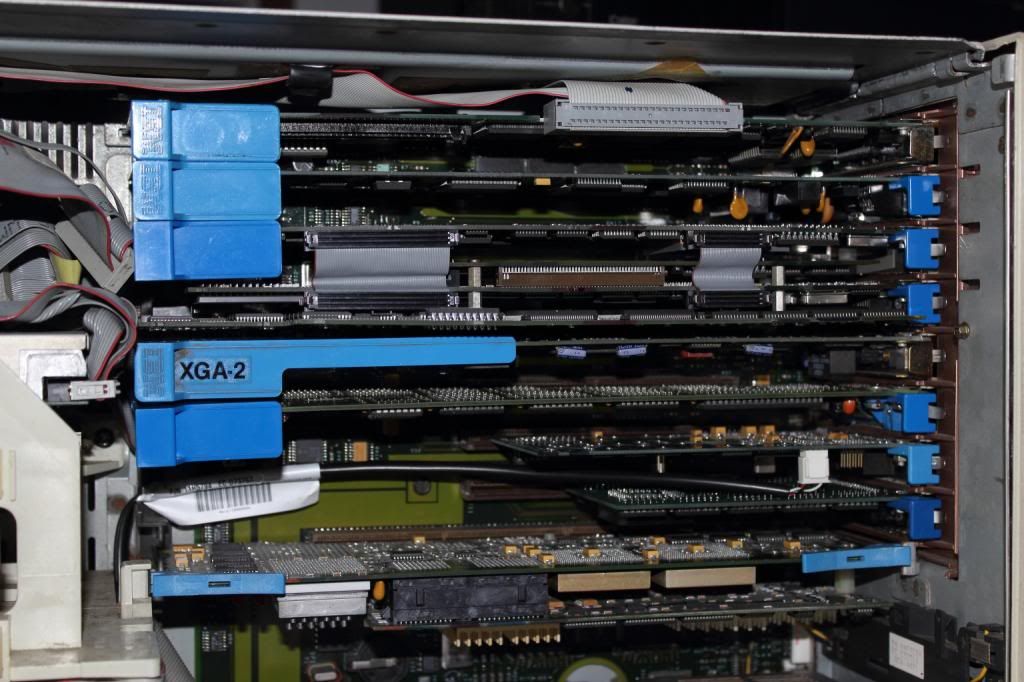ardent-blue
Experienced Member
- Joined
- Jan 2, 2015
- Messages
- 479
Reference Disk Trivia and specifically, Copying Option ADFs to the Refdisk CORRECTLYYou need to add them to the setup disk.
Reference Disk Trivia and specifically, Copying Option ADFs to the Refdisk CORRECTLYYou need to add them to the setup disk.
I know that. It does not recognize them when I add them to the reference disk. Even went to the trouble of recapping the board which solved random error codes on the front panel display but not refusing to recognize the diskettes for the cards.Of course not. You need to add them to the setup disk. Same as you would for changing any option on an IBM ps/2 system.
So. The business case [note the word "business"] was to sell to folks needing to engage in business. Not the hard-core gamer market [which didn't exist back then]. IBM sold [or tried to sell] reliability. Compatibility with business-related apps [accounting, word processing, etc] was what IBM focused on. This was in the late 80s into the early 90s, video capabilities, GUI interfaces, and the ever pervasive networking came late in the game.I had one of those Ultimedia systems IBM offered in the 90s. Model 77 IIRC. It was adequate to the task.
Much of the PS/2 lineup wasn't quite to the standard one expected from IBM. The tower cases were a joy to work with. What went into those cases was underdeveloped with SIMM sockets that didn't work and even incompatibilities when installing IBM manufactured MCA expansion cards. The PS/2 line also had a lot of those horrid Dallas clock/batteries making just one more repair item.
I bought it in 2009 with two binders of technical docs for $150 + shipping. Right at the end of when this stuff was still obscure junk.SGI IrisVision? Do tell.
With what application? Pretty limited to CAD, IIRC. I DO know someone with the correct compiler, if you have a desire to code for it.



Funny i havent heard anyone mention ollicom since the mid to lste 90s. The hob I was at used them exclusively for fast token ring and 100mb ethernet. They were trully really good network cards. Our domain controllers had them as well.I figured OS/2 would run smoother and better on a PS/2 then a generic PC.
Olicom OC-2335 10/100 Ethernet is the card you are talking about? There is at least one NIB on eBay now for $100 BIN.

Argh. Since I don't have either, further guestimation won't add much.I know that. It does not recognize them when I add them to the reference disk. Even went to the trouble of recapping the board which solved random error codes on the front panel display but not refusing to recognize the diskettes for the cards.
Er, not true. Or, not exactly true. The drivers on the sysboard limit adapter-sysboard or adapter-adapter transfer speed. So if you dropped a Corvette into an 8580 [assuming you could "fix" the 2K NVRAM... ], it could run the 64-bit streaming mode, but talking to the 386 over the earlier drivers would be questionable. Adapter to adapter transfers are less constrained, since you could run a Corvette and an Etherstreamer talking to each other at rates up to 80MB/s [on a later production system, my guess 76/77, 90/95]. Where the rub is, allowing systems to reach and sustain the 64-bit streaming mode.MCA can do what 40MBs @32 bit?
Er, the granny low gear "basic transfer" is done at 10MHz, yes. ISA is maybe 16-bit [if that] over 8MHz [stable systems]. MCA transfers are not ISA. Wider [16/32 bit], less time to set up the transfer, much more flexible. Do not equate clock speeds between ISA and MCA. In ISA, the bus speed is matched to the CPU. In MCA, the bus is not shackled to the CPU speed. Each device arbitrating for the MCA bus negotiates between the initiator and target for mutually supported data width and transfer speeds [modes].MCA runs at 10Mhz.
Unfortunately, nobody made HSTR cards for MCA. "Modern" systems don't have support for TR. So, my fervid hope of running an Auto LANStreamer into a Madge Deskstream, taking the HSTR uplink over to a PCI HSTR adapter in a "Modern" system, is paradise denied.fast token ring
This sounds reasonable.ISA on 386/486 machines was uncoupled from the CPU clock
